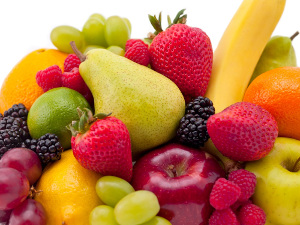Peru's buoyant cherimoya industry developing new export avenues
From 2007 to 2011, Peru's exports of cherimoyas - otherwise known as custard apples - rose more than three-fold to US$279,659. The amount is miniscule compared to other booming sectors such as grapes and citrus, but off a low base the industry is making headway. Lima-based Mariposa Andina only started shipping processed cherimoyas in 2010 and has already staked its claim as the market leader. At www.freshfruitportal.com we speak with the company's commercial manager Graciela Trujillo about a delicate crop with room for growth. 
Trujillo says several years ago the company opted to open up markets for more native exotic fruits rather than going with the crowd.
"We decided we would prefer to be the ‘head of the lion’ than the ‘tail of the rat’. We had two alternatives - enter with something new and assume the challenge of developing a market, or let's plant avocados along with everyone else who is planting avocados," she says.
"We bet on what was more difficult, and that was lucuma, and people said 'what is lucuma?' We planted the fruit on our farms with GlobalG.A.P. certification to be able to have a base and have significant orders to meet volumes."
Lucuma, a very sweet tropical fruit also known as eggfruit, has taken Peru's trendy gastronomy scene by storm and has trickled over into neighboring Chile, also reaching markets such as the U.S., the U.K., Germany, Japan and Australia.
The country's exports of the product grew by more than six times from 2007 to 2011, reaching just shy of the US$1 million mark.
Cherimoyas following in the footsteps of gourmet lucuma
Mariposa Andina is the leading exporter of the fruit, sold in frozen pulp form, and plans to replicate that success with cherimoyas. The fruit is also sold as frozen pulp and is mostly used for juices, pastries, desserts and ice creams.
"The cherimoya is a relatively new product in the export market currently in Peru. It has great potential because the cherimoya is a fruit that is known worldwide, and it can fit into a high level or gourmet niche, but it hasn’t been developed in the export market.
In 2010 the company shipped just US$1,133 worth of cherimoyas which were sent in a test lot to Chile, while in 2011 it expanded its scope to Spain. Trujillo adds the company has received requests from interested buyers in the U.S. and the U.K., but is yet to attend to them.
Government statistics show Canada is also an important destination for Peru's cherimoya industry, accounting for around a third last year. Chile bought around half of Peru's cherimoya exports in 2011, and the U.S. purchased 13%.
"This year we already are at more than US$400,000 in cherimoya exports - this year we won’t hit US$1 million in cherimoya exports because the season is finishing up, but next year we probably will.
"Now the prices for cherimoya are very reasonable and in the domestic market they are going up, so everything is an issue of supply and demand.
"The market for cherimoyas is not like asparagus or grapes, as consumption is generally local, so it is something that could grow. There is a great market space and great demand."
The country's season runs from March to August, while many Northern Hemisphere growing countries like Spain have seasons that run from around October to December.
Sticking to processed
She says despite the crop's opportunities, it is unlikely that fresh cherimoya exports will take off as well as processed.
"This is because it is a complicated product to manage, from picking to processing everything has to be perfectly coordinated because it’s a fruit that ripens very quickly, it’s very delicate and has oxidization, so there are a series of steps that one needs to have well organized.
"The cherimoya is a fruit that can ripen, depending on the area and the process, in one or two days, so shipments would have to be by air freight. Yes there could be a strong market, but the prices would have to be very high."
Improving production practices
The company currently sources its cherimoyas from the Huanangui area in the sierra of the department of Lima, which Trujillo says is a very good zone for the crop; completely controlled and fruit fly-free.
But aside from this area, large cherimoya regions are still fairly untapped for export for contrasting reasons.
"There is also the Cumbe Cherimoya that is well known from Cajamarca, but this is highly demanded in Peru and it carries a more expensive price, so that's not what we use for processing.
"Then for example, you have the zone of Huari (Ancash) which is a zone that has a great deal of cherimoyas planted but lacks support to have a better fruit quality; these growers throw out at least 50% of their harvest because it’s not well treated, and this percentage of crops is with small growers that cultivate together in the whole valley, and they don’t have the capacity of big companies.
"They (Huari growers) need support from SENASA (National Agricultural Health Service) to come and protect this fruit because for quality issues we simply can’t buy it."
The company is participating in a partnership with communities in the area to try and improve production methods, which would help boost cherimoya supply.
Photo: Biocomercio Peru















































